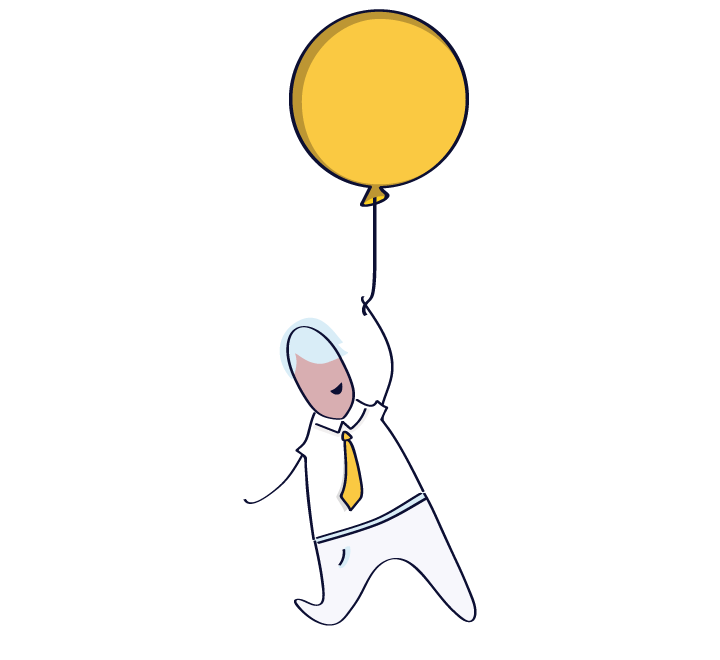
Rarely will a new prospect get back to you after your first cold email, and even your best clients often need multiple touches to draw them back into a sales conversation. Both situations take time and persistence.
Buyers want to know that you care about them and their needs, and following up is a way to show that you care.
But how many email sequences should you send before you call it quits? At some point, following up too much will annoy your prospects and customers, and it will be a waste of time that you could have otherwise spent on buyers who are actually interested in your product or service.
To uncover the perfect number of follow-up emails to send, we’ve compiled the available research and reached out to a few sales experts to help us solve this riddle.
Everyone has their own opinion on how many emails to send, but let’s look at some data first.
From looking at this data, it’s clear that following up is important and many of us don’t seem to make it enough of a priority or we give up too soon.
However, data and stats can only tell us so much. Keep reading for some real-world advice…
Are you falling off your prospects’ radars? With Nutshell’s personal email sequences, we’ll remember the follow-up for you.

We asked 10 sales professionals about their follow-up strategy and how many emails they send before giving up. Here’s what they had to say:

Stephen Hart
CEO & Founder at Cardswitcher
“If you’re cold-emailing, an average of three sales emails sent over the course of a couple of weeks is usually enough to get a good idea whether a prospect is ever going to be interested in what you’re offering.
“Any more than that and you’ll probably just be wasting your time.
“My strategy is to send an initial sales email that’s concise, relevant, and makes it easy for the customer to get in contact with me if they’re interested. If I don’t receive a response within seven days, I’ll send a follow-up email, and if I don’t receive a reply to that one, I’ll send another one.
“If you net a customer who’s interested, the total amount of emails you’ll send before closing the deal will obviously vary. Usually, expect around 5 to 15 though—especially if a lot of questions are asked.”

Andrew-Marcel Tit
Customer Success & Product Marketing at Paymo
“Since Paymo is an intuitive, self-service product that can be set up in a couple of minutes (as opposed to an enterprise platform), we deal with a high volume of accounts.
“Throughout our 15-day free trial, we first nurture our users with a set of activation campaigns (five to six emails) depending on the actions they take in the app.
“Once they perform a certain number of actions, they get into the next phase: an automated sales campaign (three to four emails). If somebody replies in any of these campaigns, we pull them out and talk 1:1.
“I usually send up to three to four direct emails, so I don’t spam someone who already went through our campaigns. It might look like a small number, but we value our client’s privacy and let the product speak for itself.”

Mike Carroll
Former Head of Growth at Nutshell
“Our customer lifecycle can be as short as a week and as long as a year. The frequency and consistency of our email communications are dictated by the position of a prospect in our funnel, and the intensity of that cadence increases in tandem with a prospect’s interest.
“The best part about email is that it never has to give up. And if your sales and marketing teams are working together then it’s not a question of how many emails to send, but what email to send at what time.
“The whole point of email communication for any sales and/or marketing team—at Nutshell we call it our Growth Team—is to build a story of value. If you provide value with each communication then each of those emails is an opportunity to convert.
“Today’s buyers can’t really be forced into making a decision, they’ve become much smarter than that. What you can do as a sales team is simply be there, demonstrating the value of what you’re selling at every step of the way.”

Shawn Breyer
Owner of Breyer Home Buyers
“Since we buy houses from homeowners, we have a low volume business. We get three leads per day from our websites, and we call each lead and meet with most of them in person. Our focus is to build a good relationship with homeowners. This allows us to understand their problems and solve them better.
“Most of the time we get a ‘no’ when we provide an offer to the homeowner. This initiates the follow-up process.
“A ‘no’ means that the seller is not ready to sell at this moment. Any property that causes enough pain will get sold by some means. For this reason, we don’t stop following up until they sell the property or they tell us to stop contacting them.
“We bought a house from homeowners who were in our follow-up email campaign for 19 months one time. We send an email every three days in our follow-up campaign. These are content articles, videos, and follow up questions.”

Josh Slone
Content Marketing Manager at LeadFuze
“In the initial sequence of cold outreach, we like to send four to five emails (the outreach can also include reaching out via LinkedIn, phone and physical mail, but not always).
“But leads who don’t answer aren’t always gone forever.
“After a period of time (like three to six months), we may try cold outreach again. You never know when a potential client begins thinking about changing solutions. Sending another sequence round could catch someone in the right place at what is now the right time.
“We recommend always sending at least four emails in one outreach sequence.
“Sometimes people open every email, waiting for something to entice them. Email one may not do it, but emails two-to-four may. In fact, in the last email, we always use some form of ‘break up.’ Basically, we say something like, ‘Looks like you’re satisfied with your current solution. If you’re ever looking for something else, let me know!’ We get a lot of responses from our break up emails.
“Another thing we do to shorten the sales cycle is to include a meeting link in our emails. A meeting scheduler link is either in our signature or a call-to-action within the email.
“It’s usually subtle, so as to not scare off more timid prospects, but it’s there for those who are ready to talk.”

Jeff Kear
Co-Founder / Head of Sales & Marketing at Planning Pod
“Our sales reps send at least six emails per lead before giving up, with the average being seven to eight emails sent before we close the file on the lead. In addition, we also call those leads twice on the phone, as some prospects would rather talk with a live person than engage in back-and-forth emails.
“On average, it takes three to four emails to hear back from a lead, whether they are interested or not, and it takes about six emails and three phone calls to close an interested prospect.”

Sophie Miles
CEO & Co-Founder of elMejorTrato.com.pe
“First of all, it’s necessary to see who opens your emails, so you should use an email tracking tool like YAMM that lets you know who’s opening and clicking.
“If someone doesn’t open our first eight emails (one per week) we just delete them from our database. On the other hand, if someone opens our emails, even if they do not respond, it’s a good idea to keep them in your database.
“We have also tried calling our contacts after they have opened or clicked our emails and it has given us excellent results.”

Andrew Syrett
Head of Sales at YourParkingSpace
“Every sale is different, so it’s impossible to say that ‘x’ amount of calls or emails will translate into a deal. The volume of emails very much depends on how far along in the process the lead is, and how strong that lead is in the first place.
“To a large extent it comes down to the discretion of the sales rep, but typically, a hook email will have a conversion rate of one in five, warranting follow up emails to the four recipients that you didn’t hear back from. Again, strength of the lead and benefits of the deal can affect this.”

Steven Lu
Co-Founder & CEO at Interseller
“We cut out after three emails usually (four at max). We see Interseller clients do five, but we basically see no replies past the fifth email.
“It generally takes us only two emails on average to get a 12% reply rate. Three gets us about 15-16% replies.”

Ruben Gamez
Founder of BidSketch
“We follow up a maximum of four times before dropping the lead.
“Generally, if we do hear back, about 50% of those responses are on the first email, and 50% when following up. From start to finish, it takes us about seven emails (with responses plus reminders) to get to a demo, and we close 75% of demos.”
According to the data, five emails appears to be the magic number. The feedback from the sales professionals quoted in this article seems to back this up too, with many citing three to five as the number of follow up emails they send.
However, some stated that they never give up, and will continue to follow-up until the prospect specifically tells them they’re not interested or asks them to stop emailing.
Ultimately, the magic number for your business will depend on your specific product or service, the life cycle of your customer, and how interested potential buyers may be. In any case, crafting a follow-up email sequence and continuing to test your strategy will be the key to closing more deals.

Join 30,000+ other sales and marketing professionals. Subscribe to our Sell to Win newsletter!